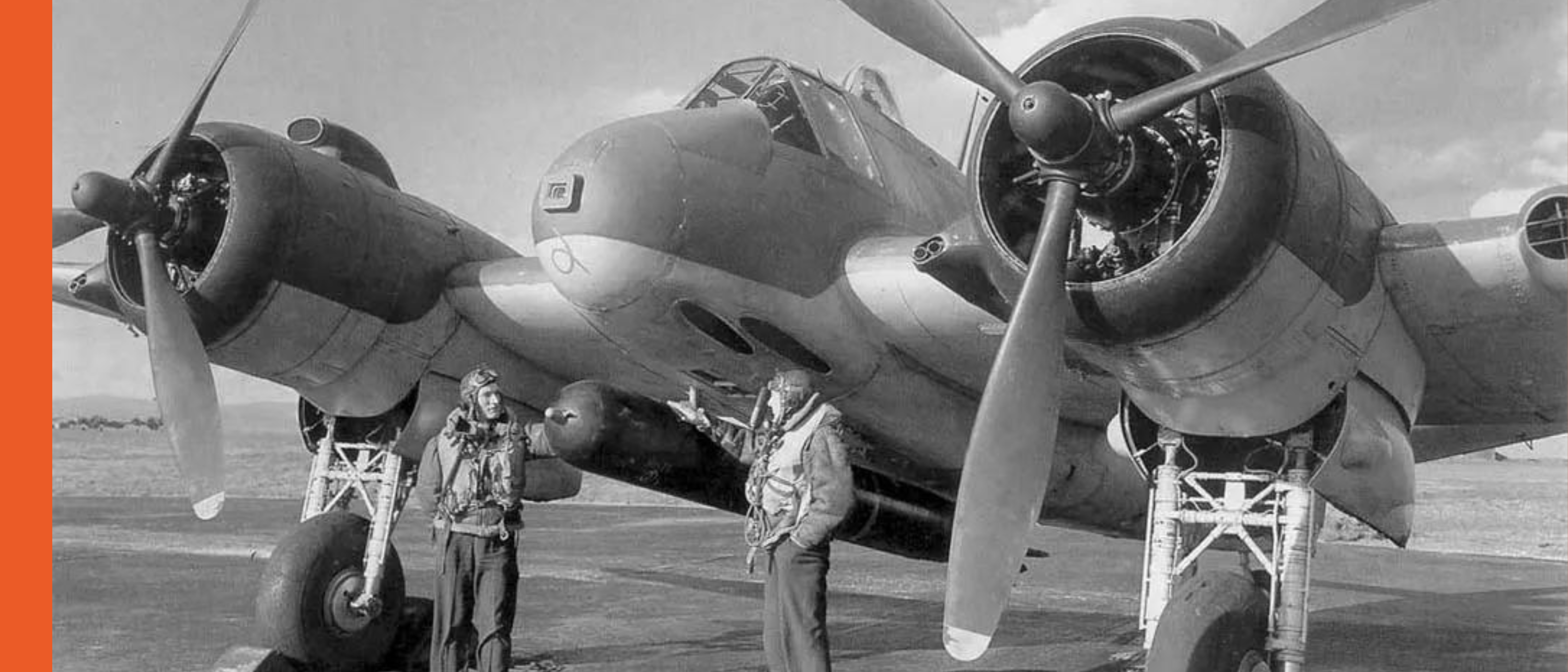Many countries were unprepared to fight Germany in the air due to outdated weaponry, a lack of trained pilots and a lack of modern air tactics and strategy. This gave Germany a significant advantage in the early years of the war.
From 1940 and especially after the Battle of Britain, the balance of power in the air began to gradually shift. Increased Allied production of military aircraft, improved tactics and strategy, as well as resource depletion and losses among German pilots began to affect the course of the air war.
In the face of global conflict, the need for a versatile long-range fighter was paramount. The prototypes, characterized by rugged construction and advanced radar systems, were a testament to the ingenuity of British engineering during the war.
One of the heroes of aviation countermeasures was the Bristol Beaufighter.
The aircraft entered combat at the height of the Battle of Britain, namely in 1940, only 13 months after the first prototype was flown. At the time of its production it had one of the most powerful armaments in the world: four 20-millimeter guns and six 7.7-millimeter machine guns. Equipped with the latest radar system, the Beaufighter was incredibly effective at night and was the first night fighter in the world. The Beaufighter’s primary mission was to intercept small groups and single German aircraft appearing over Britain.
During the raid on London from May 19 to 20, 1940, 26 Luftwaffe aircraft were shot down, 24 of which were shot down by British Beaufighters.
From 1943 the Mediterranean Sea became the theater of war for Beaufighter fighters, here they were used as long-range escort fighters and as strike fighters, covering the formations of the Royal Navy.
Between May 1940 and 1946, 5,928 Beaufighter aircraft of various modifications were produced.
The Beaufighter was in service in the Far East until 1950, and as a target towing aircraft it served until 1960.
More about the dive site and the history of the wreck in Malta is written in our article.
For a more in-depth look at the history associated with the site, we suggest you check out the following sources:
Movies:
https://www.youtube.com/watch?v=EaZcU2uI7Dg
Summary – Duration: 13 minutes. Despite its brevity, the video contains historical footage and concisely selected information that will immerse you in the history of the Bristol Beaufighter in a matter of minutes.
https://www.youtube.com/watch?v=ZdQKFDLo3iI
Detailed Documentary – Duration: 72 minutes. This film is a fascinating journey through the pages of history, exploring the role of the Beaufighter in the Second World War. Special attention is given to its involvement in combat in the UK, Malta, North Africa and the Pacific Theater of Operations, with unique stories from the pilots of these aircraft.
Photos:
https://www.gettyimages.it/detail/fotografie-di-cronaca/british-aircraft-designer-leslie-frise-works-on-fotografie-di-cronaca/1366583992?adppopup=true
Photo by Leslie Frise
Designer Leslie Frise works on drawings of a Bristol Beaufighter aircraft in his drafting office at home in Westbury-on-Trym near Bristol, England during World War II, July 20, 1943.
https://www.gettyimages.it/detail/fotografie-di-cronaca/bristol-beaufighter-factory-during-ww2-circa-fotografie-di-cronaca/1450423140?adppopup=true
Bristol Beaufighter factory during World War II, circa 1940.
Museums:
https://underwatermalta.org/discover/beaufighter/
Underwater Malta Virtual Museum – Here you will find a detailed description and 3D model of the sunken Bristol Beaufighter. The Virtual Museum is a key resource for learning about Malta’s underwater artifacts.
We are frequent visitors to The Bristol Beaufighter. Keep an eye on our daily dive schedules and join us on this journey. And don’t forget, our boat is available for charter and you can make your own itinerary visiting any dive sites in Malta!

